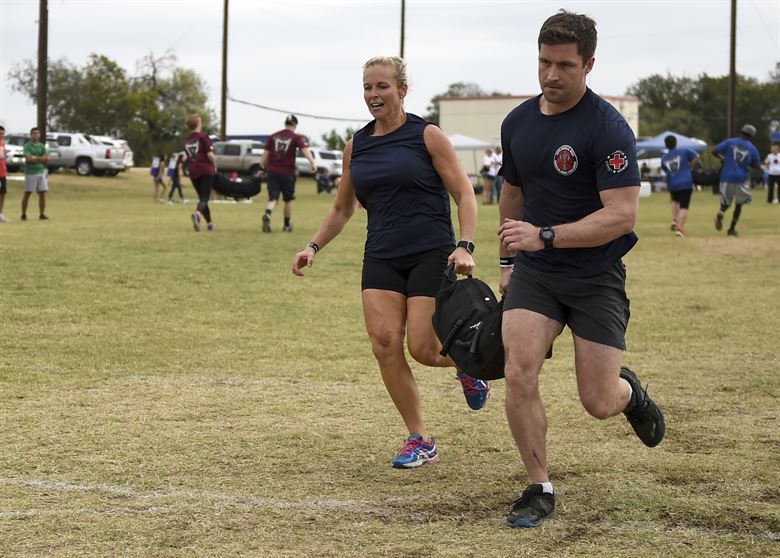Sandbag training is an excellent tool for strength and conditioning. The fact that makes sandbags extremely common is that it doesn’t require any particular technique and form.
Yes, anyone can use this versatile weighted item anywhere. This incredibly simple accessory only demands you to know how to pick up a weight safely. Here are the three main checkpoints to carry it safely:
- Straight Back
- Tight Core
- Knees Tracking Over Toes
Sandbag training will work out your stabilizer muscles over and over again.This way, you can condition your muscles for intense workouts.
Ideal Weight Of Sandbag
The ideal weight to use sandbag is none. Yes, you heard it right. The weight of the sandbag depends on the several different factors such as your ability, training experience, and training goals.
Fitness sandbags are quite adjustable and variable. Often, sandbags like this one come with the filler bags for you to fill in the sand as per your fitness goals. Therefore, by varying the amount of sand within, you can adjust the weight as per your particular workout routine.
Sandbag Training For Weight Loss
Suppose you are using a 16kg kettlebell for weightlifting. Now, what if you intend to increase the conditioning level and weight loss.
Here, sandbag comes into play. Choose a medium sized sandbag that has the capacity to store enough sand for 10-50 pounds. But how sandbag is better than the kettlebell?
Sandbag will be lifted with two hands form its comfortable handles. Hence, the sandbag is a safe weighted item in comparison to those hefty dumbbells and kettlebells.
Moreover, if you don’t want a floppy sandbag, you can make it tighter for high rep lifts like shouldering. You can do it by filling the crevices and spaces with the other items like pieces of clothes or old blankets.
If you are using sandbag for weight loss or conditioning, make sure the one you are going to buy has handles. For conditioning circuits, you want to lift heavy sandbag for high-intensity workouts. It must have at least one set of handles either across the middle or at the ends.
Sandbags with handles will shift your focus from strong grip to full body movement as grip and throw of the sandbag is now piece of cake.
Related: Best Sandbag Training For Weight Loss
Sandbag Training For Strength
If you are using sandbag for strength, our recommendations and guidelines are going to change. Let’s say you are using 24-32 kg kettlebells for most of your squats and deadlifts. To increase the core and grip strength, you need to use the sandbag. But in this case, buy a larger sandbag with the weight capacity of at least 70-125 pounds.
In strength training, sooner or later, you are going to drop the weight to the ground after extreme exhaustion and tiredness. So make sure your sandbag is strong and durable enough to handle it.
As far as the question of sandbag handles is concerned, we recommend using sandbag that has no handles. But there is no hard and fast rule to it. If you are more interested in sandbag training for grip strength, you don’t require handles. On the other hand, if your goal is the core strength, handles are pretty useful.
Related: 7 Sandbag Exercises For Beginners
Fitness Training Sandbags
Now often the people are very much confused about ‘Should I make/buy one?’
The answer is very simple: It depends on your particular exercise goals and routines. However, I recommend you to buy the fitness-specific sandbag from the store. With the increasing popularity and demand, now the high-quality sandbags are quite affordable.
Moreover, commercial fitness sandbags don’t leak sand and have a number of filler bags for adjustable weight.
Never buy a sandbag with plastic handles, until and unless you want to keep on smacking it in your face during lifts. Buy one which has cloth handles. For high-intensity training, prefer the one that has two sets of handles: one across the ends and other across the middle.

